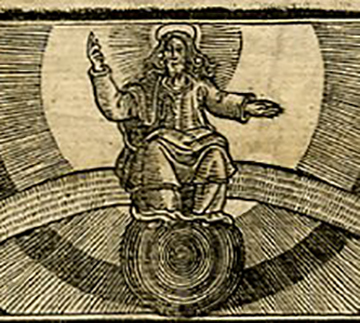Representations of Old English and Anglo-Saxon Letterforms in Actes and Monuments
In the early modern period, printers were concerned with faithfully representing Old English letterforms in printed books as they appeared in manuscript form (hand-written documents and books) (Echard 25). This strategy was used in an attempt to authenticate the Old English text and, thus, bring an English authority to the entire codex (25, 28). English authors and printers were concerned with producing an English literary canon, and using authorial texts and textual representations was one strategy to establish versions of “Englishness” (25, 28). Specifically, printing Old English religious texts was a strategy to to align the Church of England with a form of indigenous English Christianity (27).
To help readers who were likely unfamiliar with Old English and its letterforms, early modern printed books that included Old English texts often prefaced them with tables that decoded the characters (Echard 25). These tables drew attention to the Old English texts and made them less daunting for early modern readers. Printers and authors also often included an early modern English translation alongside the Old English texts to ensure readership (25, 29-30). Producing Old English letterforms for printing was a lengthy and expensive process: letterforms had already been cut for languages such as Latin, Hebrew, and Greek (which could be imported), but Old English letterforms had to be created based on manuscript (hand-written documents) exempla (27). The process for creating these letterforms consisted of locating exempla (manuscripts that included Old English texts), making matrices (concave letterforms in which types are cast), and cutting punches (Nicholson 778). Although Old English letterforms were used to establish authority and a brand of indigenous “Englishness,” perceptions of Old English varied. Often, Old English was associated with “Gothicness” and, thus, seen as a barbaric language compared to Latin (Echard 30). Although perceptions of Old English varied in the Early Modern period, its presence in a codex brought the text back to a time of symbolic antiquity (30).
The Old English sermon found in the 1610 edition of Foxe’s Actes and Monuments includes a small table of Old English letterforms and a brief discussion of the sermon’s translation. The sermon reproduced in this codex is attributed to Ælfric of Eynsham (c. 950–c. 1010), Benedictine abbot of Eynsham and scholar, who translated the text out of Latin into Old English (Godden para. 1). This codex does not include a modern English translation of the Old English sermon.
The table of Old English letterforms found in the 1610 edition of Foxe’s Actes and Monuments represents variations in the typeface and abbreviations used to represent Old English. Some of the most antiquarian forms represented in the table are “thorns,” “eths,” and “yoghs” (McGillivray 25-26). “Thorns” and “eths” are closely related in Old English as they both represent a “th” sound in modern English (25). However, “thorns” and “eths” can either represent voiced “th” sounds (like in the modern English word “that”) or unvoiced “th” sounds (like in the modern English word “thick”) (25). These letterforms are figured in the table and are represented by the forms Þ and þ (capital and lowercase “thorns”) and Ð and ð (capital and lowercase “eths”). The “yogh” in this table appears under the lowercase “g” and is represented by the symbol ȝ. “Yoghs” have two distinct sounds in Old English: if a “yogh” appears before a back vowel (like “o” or “a”) or another consonant, it is pronounced like a hard “g” in modern English; but if a “yogh” appears before a front vowel (like “i” or “e”) or at the end of a word after a front vowel, it is pronounced like a “y” in the modern English word “yes” (26).

